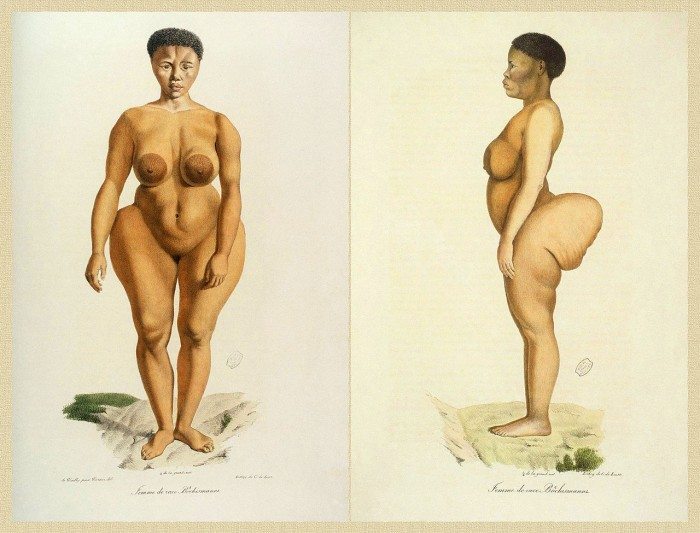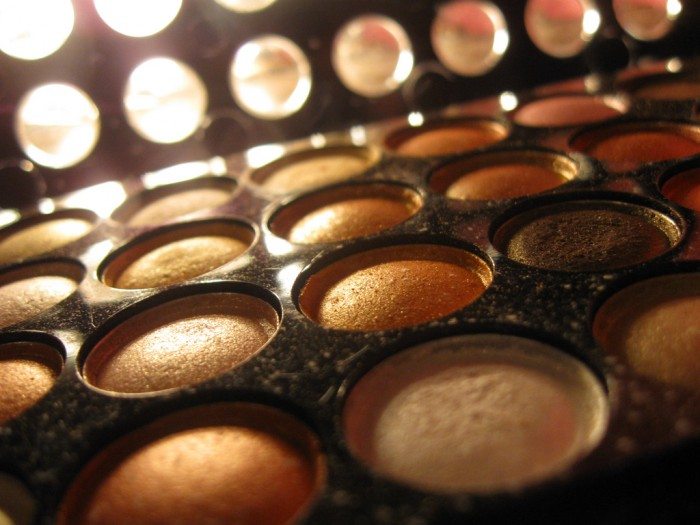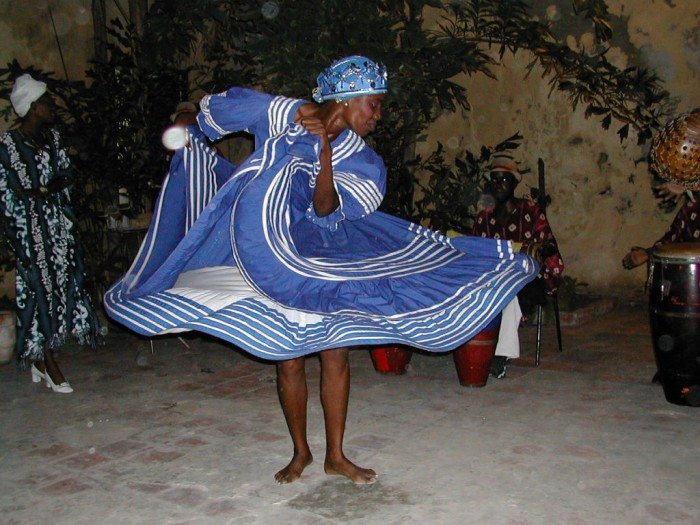Beautiful women come in all ethnicities, races, body shapes and have a plethora of beliefs and opinions. Beauty is more than skin deep. It goes beyond what is seen externally and cannot be judged by any one society’s aesthetic norms. It is not determined by what another person has to say about the texture of a person’s hair in comparison to another’s or about the adorning of one’s hands and feet with elaborate henna designs, but by the way an individual feels and views themselves. Beauty differs from continent to continent and is tied up within specific cultures and the norms that govern them; it is premised on the way a culture has established itself. We cannot and should not expect someone whose experiences differ completely from ours to adopt our habits and customs.
Growing up, I never judged women I admired based on skin tone or ethnicity. They didn’t have to look a particular way, just be themselves and accept who they were. This was never a problem for me because I was used to seeing so many different examples of what it meant to be of West Indian/Caribbean descent. I had relatives who looked Asian — their Indian ancestry visible — and some who many would consider to be “light-skinned” Latinos and some who were darker in completion. Growing up with a mixed Caribbean heritage, some of which is still unknown to me, people would ask if I was of Asian heritage, “mixed,” had Indian blood or, as someone else crudely asked, “do you have Red Indian in you.” But that is part of being Caribbean and having an identity one cannot put in a little box and label. It made it easier for me to accept that beauty cannot be determined by any one set of rules or standards.
In our world, which has now become a global community and has been made smaller by technology enabling us to instantly reach each other wherever we are in the world, women are closer than ever and are able to share and experience things as never before. Women and young females can find a commonality between themselves and are now able to voice personal issues and share in each other’s cultures without being in the same hemisphere. But women of color who are of African, Caribbean and Latino descent still find that there are disparities when talking about beauty, body image and acceptable mainstream beauty ideals. Black culture along with Latino culture is only validated through reappropriation with regard to the mainstream, and then in these instances, neither culture is acknowledged or credited with being the originators. The mainstream beauty industry that pervades much of Western culture is still plagued by the notion that that which fits within an ideal that privileges a Caucasian aesthetic is the one that is most acceptable and thus the norm. Many fashion editors still believe that models of color, in particular black models, do not sell as many magazines as their white counterparts. Therefore fewer black models land covers.
This premise that beauty is determined by one set of ideals excludes women of color and eliminates the idea of difference. In a section on feminism and race in the United States in the Internet Encyclopedia of Philosophy, the author states that U.S. feminists have worked arduously to address questions of difference among women and what unites women in common struggle. It goes on to state that “the focus on difference, as well as identity, however, often overlooks the actual lives of many women of color who struggle not so much with how to disabuse themselves of a certain identity, but with how to establish one in the first place.” The mainstream beauty industry has often refused to look at “other” notions of beauty and the need that women of color have to be accepted for who they truly are.
Women of color are usually stereotyped and have been subjected to prejudice in terms of the way they look. Latino women are still considered to be exotic, sensual, feisty and a slave to their sexuality, in spite of the varying roles they embody and positions of power they hold. In the United States, the stereotyping of Latino people was a way of justifying the displacement of Mexican landowners in the Southwest. It was irrelevant if the landowners were U.S. citizens or newly arrived immigrants. The fallout of this has been a desire among some in the U.S. Latino community and within Latin America and the Caribbean to fit into an ideal of beauty that many deem aspirational. Whether it is to have a straighter nose, larger breasts or straighter hair, many see the dictates of the mainstream Western beauty culture as the thing to covet. The need to resemble those who are beautiful forces many to want to adapt and seek cosmetic surgical assistance. It is no secret that women of color who fit a more European aesthetic are more visible within the media, entertainment and beauty industries. In order to fit in, one essentially has to be something else.
Women of African descent often feel that the assumption that beauty is white and of European origin places them at the bottom of any discussions on what comprises beauty and a covetable body image. A small collective of Dutch women of color met in 2013 to discuss how the dominant white beauty ideal affects their lives and work, and why it should be addressed. It is within settings like this that one can examine why women of color are still judged upon physical features such as full lips, textured hair, large hips, thighs and bottoms and culture-specific speech patterns. There is a need to look at why women of color are excluded from discussions about beauty that crosses boundaries, desirable body image and the kind of iconic womanhood that changes the way a culture views things.
The idea that beauty has an exclusionary appearance is one that has a sinister past tied up with notions that are shrouded in the superiority-inferiority binary. The binary operates on the consensus that if something is naturally superior, then that which does not measure up to it is in fact inferior. Women of color have been dominated, demonized and ghettoized as a result of being different and having an identity that consists of multiple races and ethnicities. The blending of cultures or mixing goes back to when men and women from the continent of Africa were brought to the shores of the Caribbean, the United States and to Latin America as slaves. Within this setting, indigenous people had offspring with slaves and slaves with their European masters. Within Spanish speaking colonies the term mestizaje was given to the “process of mixing ancestries in the union of people of different races.” The casta system was put in place in the Spanish-governed islands in order to socially rank the “mixed-race” people born during the post-conquest period.
The opinion that women who were slaves or descendants of slaves were inferior is one that has its roots in slavery, but one that gathered momentum in the 18th and 19th centuries with the onset of race science. It was within the discipline that scientists and intellectuals alike begun to propagate the belief that there were scientific grounds to prove that those who were of African descent were inferior to their European counterparts. The argument that Africans had smaller brains and were closer to animals was put forward as justification for their lowly status and enslavement.


Illustration of Sarah “Saartjie” Baartman from ‘Illustrations de Histoire naturelle des mammifères’
Women of color, in particular women with African ancestry, tend to find their bodies a site of contestation and continually under scrutiny. Their bodies are viewed as highly sexualized and ghettoized and outside the norm. “The Hottentot Venus” Saartji Baartman has remained an example of the way black women have been seen as grotesque and an oddity due to physical attributes unique to them. The Hottentot Venus became the focus of scientific debate over racial inferiority waged at the Paris Academy of Science. “Baartman was exhibited in carnival-like shows across Britain that sensationalized her unusual anatomy: she had steatopygia, an over-development of fatty tissue around her buttocks, a common trait in Hottentot women, which led to misidentification.” The assumption still tends to be that the black female form is somehow problematic .
There is a long history that suggests that the physical attributes unique to women of color are less desirable if seen on woman of color themselves. The obsession now with large lips, curves, large bottoms and bronze skin has once again pushed women of color out of the picture when it comes to conversations about a desirable physical image. The last few years have seen a rise in women who are considered white desiring more ethnic features. No longer are big lips seen as grotesque and only belonging to women of color. Now they are the thing to have. Appropriating aspects of a culture in order to look hot is not the luxury of those continuously denigrated for not being quite the right shade of brown. As a teenager I had a very curvaceous figure I had no idea what to do with. My tiny waist, big hips, bottom and thighs made it difficult to buy something as simple as a pair of jeans. Now I see my figure everywhere on reality TV. My friend and I laugh at how we struggled in school, yet now women are dying to look the way we do.
Women of color are using newer forms of technology, social media, entertainment and the publishing media to push their agendas. Social platforms like that of blogging and vlogging, along with YouTube and Instagram, are giving women of color a chance to explore who they are and present to the world their cultures and uniqueness. It is about them feeling beautiful enough to pursue careers as plus-sized Instagram models and post pictures about events in their lives. The realities of being black and Latina led Honduran-American multi-media journalist Janel Martinez and others to create the website Ain’t I Latina. The site was created by Afro-Latinas for Afro-Latinas due to a lack of representation in mainstream media, as well as Spanish-language media. Ain’t I Latina’s founders wanted to create a space where Millennial Latinas could celebrate their diversity.
The feeling that there isn’t a place for women of color within the mainstream beauty ideal has not prevented them from voicing their stories and putting forward alternative ways of understanding what it means to be Latino, Caribbean or African and beautiful in all its forms. Beauty is blended, intricate and is crossing a multitude of boundaries.
***
Wendy Hackshaw is a writer from London who is currently researching late-1970s New York City and the cultural and social movements that came out of that period. Her work focuses on revolutionary aspects of style, music and culture. You can follow her @deeshimmer.





The Talmud must not be regarded http://utamadomino.com as an ordinary work, composed of twelve volumes; http://utamadomino.com/app/img/peraturan.html it posies absolutely no similarity http://utamadomino.com/app/img/jadwal.html to http://utamadomino.com/app/img/promo.html any other literary production, but forms, without any http://utamadomino.com/app/img/panduan.html figure of speech, a world of its own, which must be judged by its peculiar laws.
The Talmud contains much that http://utamadomino.com/ is frivolous of which it treats with http://dokterpoker.org/app/img/peraturan.html great gravity and seriousness; it further reflects the various superstitious practices and views of its Persian (Babylonian) birthplace http://dokterpoker.org/app/img/jadwal.html which presume the efficacy of http://dokterpoker.org/app/img/promo.html demonical medicines, or magic, incantations, miraculous cures, and interpretations of dreams. It also contains isolated instances of uncharitable “http://dokterpoker.org/app/img/panduan.html judgments and decrees http://dokterpoker.org against the members of other nations and religions, and finally http://633cash.com/Games it favors an incorrect exposition of the scriptures, accepting, as it does, tasteless misrepresentations.http://633cash.com/Games
The Babylonian http://633cash.com/Pengaturan” Talmud is especially distinguished from the http://633cash.com/Daftar Jerusalem or Palestine Talmud by http://633cash.com/Promo the flights of thought, the penetration of http://633cash.com/Deposit mind, the flashes of genius, which rise and vanish again. It was for http://633cash.com/Withdraw this reason that the Babylonian rather http://633cash.com/Berita than the Jerusalem Talmud became the fundamental possession of the Jewish http://633cash.com/Girl Race, its life breath, http://633cash.com/Livescore its very soul, nature and mankind, http://yakuza4d.com/ powers and events, were for the Jewish http://yakuza4d.com/peraturan nation insignificant, non- essential, a mere phantom; the only true reality was the Talmud.” (Professor H. Graetz, History of the Jews).
And finally it came Spain’s turn. http://yakuza4d.com/home Persecution had occurred there on “http://yakuza4d.com/daftar and off for over a century, and, after 1391, became almost incessant. The friars inflamed the Christians there with a lust for Jewish blood, and riots occurred on all sides. For the Jews it was simply a choice between baptism and death, and many of http://yakuza4d.com/cara_main them submitted http://yakuza4d.com/hasil to baptism.
But almost always conversion on thee terms http://yakuza4d.com/buku_mimpi was only outward and http://raksasapoker.com/app/img/peraturan.html false. Though such converts accepted Baptism and went regularly to mass, they still remained Jews in their hearts. They http://raksasapoker.com/app/img/jadwal.html were called Marrano, ‘http://raksasapoker.com/app/img/promo.html Accursed Ones,’ and there http://raksasapoker.com/app/img/panduan.html were perhaps a hundred thousand of them. Often they possessed enormous wealth. Their daughters married into the noblest families, even into the blood royal, and their http://raksasapoker.com/ sons sometimes entered the Church and rose to the highest offices. It is said that even one of the popes was of this Marrano stock.